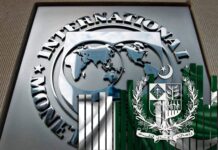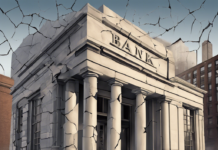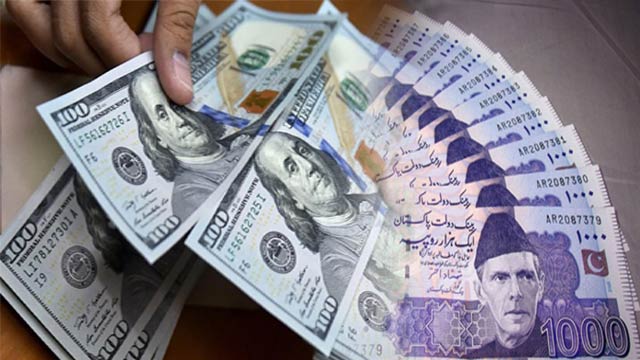The US dollar ascended to a record high against the Pakistani rupee on Thursday, crossing the barrier of Rs300 to the greenback during morning trade in the interbank market.
The greenback was changing hands in the interbank market at Rs300.4 at 11:15am, according to the Forex Association of Pakistan. In the open market, the dollar was trading at Rs314.
Yesterday, the dollar closed at Rs299.64, according to daily data released by the State Bank of Pakistan. In the open market, it was traded up to a price of Rs315 during the day, but the Exchange Companies Association of Pakistan (ECAP) had reported the buying and selling prices as Rs309 and Rs312, respectively.
As the dollar continued its upward march today, analysts called for a “sound strategy” from the government to curtail the black market.
“The government and all stakeholders need to implement a sound strategy to eliminate the black market,” said Saad bin Naseer, director of financial data and analytics portal Mettis Global.
Naseer stated that it is very difficult to find the dollar in the interbank market however it was readily available in the open market at a “black [market] price”.
He added that the central bank’s policy to keep the interest rate at 23pc was “not helpful as individuals find it more lucrative to invest in the foreign [currency] market”.
Forex Association of Pakistan Chairperson Malik Bostan warned against hoarding dollars in the hope that its price will increase further.
“Due to the increase in the dollar in the [inter]bank market, common people are also unnecessarily buying dollars in the hope that its price will increase further,” he said.
He added that the lifting of the bans on imports due to International Monetary Fund (IMF) requirements has added more pressure on the PKR.
Zafar Paracha, secretary general of the Exchange Companies Association of Pakistan, cited the resumption of non-essential imports as the primary reason for the steady decline of the rupee.
He also agreed with Bostan’s concerns, requesting people to avoid buying the greenback in an “already tumultuous time for the rupee”.
Paracha went on to say that “no one will come from the outside to save us, and neither will our politicians do anything”, stating that the people should face this together.
The desperation was noted in the open market as the average buyer was purchasing dollars at all costs, according to a Dawn report. Currency dealers said the increasing demand had pushed the price so high that it went beyond the red line set by the IMF.
The government had assured the IMF before the renewal of Extended Fund Facility in June that the difference between the rates in the two markets would not exceed 1.25pc.
The current differential is about 5pc.
Currency dealers argued that while the IMF was not in favour of interference in the currency market, the demand for keeping the differential at 1.25pc was in itself an interference.
The exchange companies contend that the open market is a reflection of prices in the interbank market, but the rise of the dollar in open market belies this explanation.
The increasing dollar price is a serious cause of nervousness for the government as it has raised the public debt unexpectedly high. Former finance minister Ishaq Dar said in a recent tweet the devaluation of rupee had raised the public debt by Rs9.3 trillion in FY23.
“The struggle to keep the dollar below Rs300 won’t work. Within a few days the dollar will cross this line. This will happen because the demand is high and there are no inflows in the pipeline,” according to Atif Ahmed, a currency dealer in the inter-bank market.
Observers feel that uncertainty on the economic front is growing and the currency market is sensitive to political developments. A currency dealer who claims to know the mind of policy makers, said political uncertainty had made the common man desperate, leading to “dollarisation of the economy”.


























I’ve thoroughly enjoyed reading this article and have been engrossed in it for quite some time. The quality of writing is exceptional and I’m eagerly anticipating reading more.